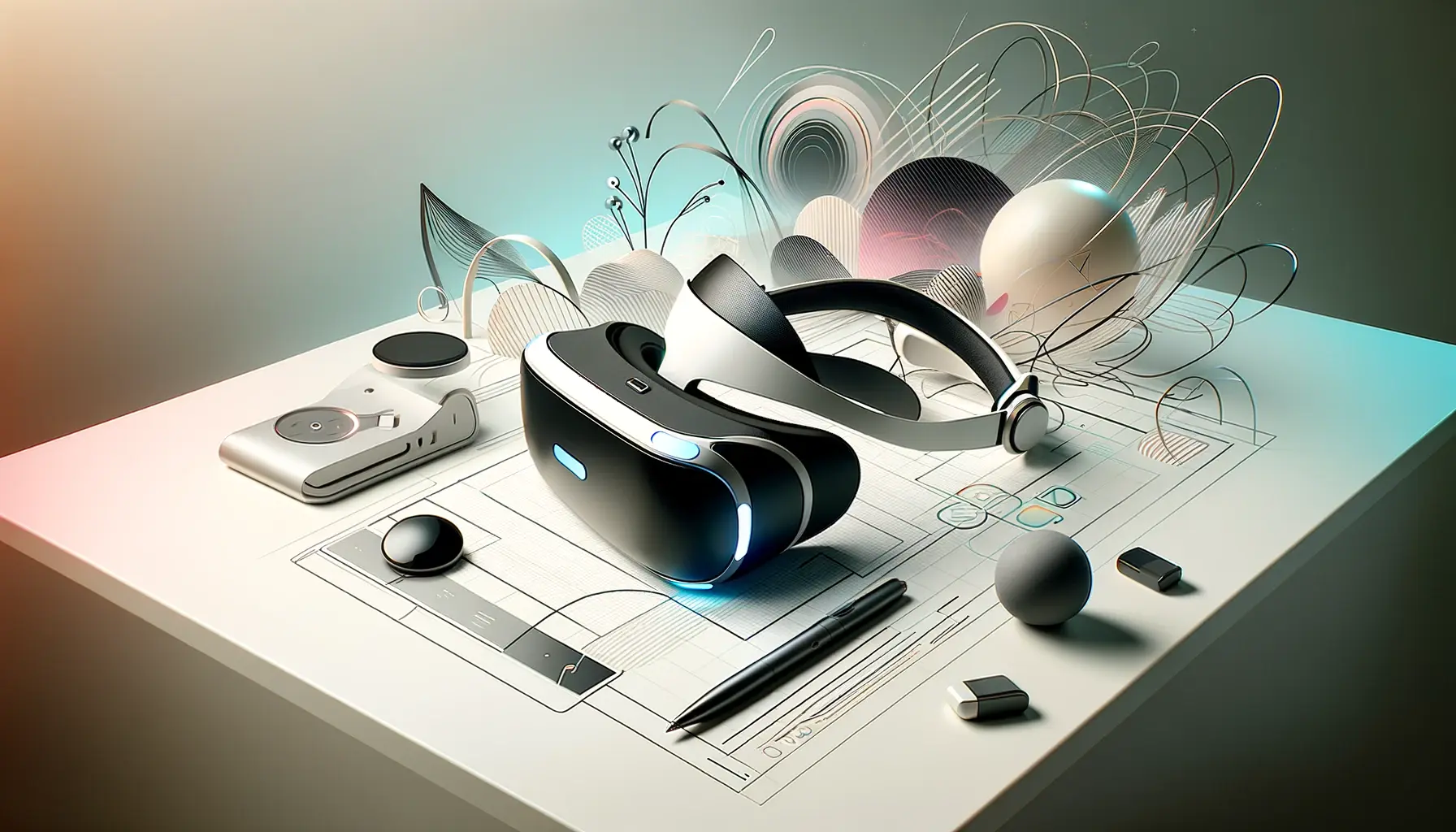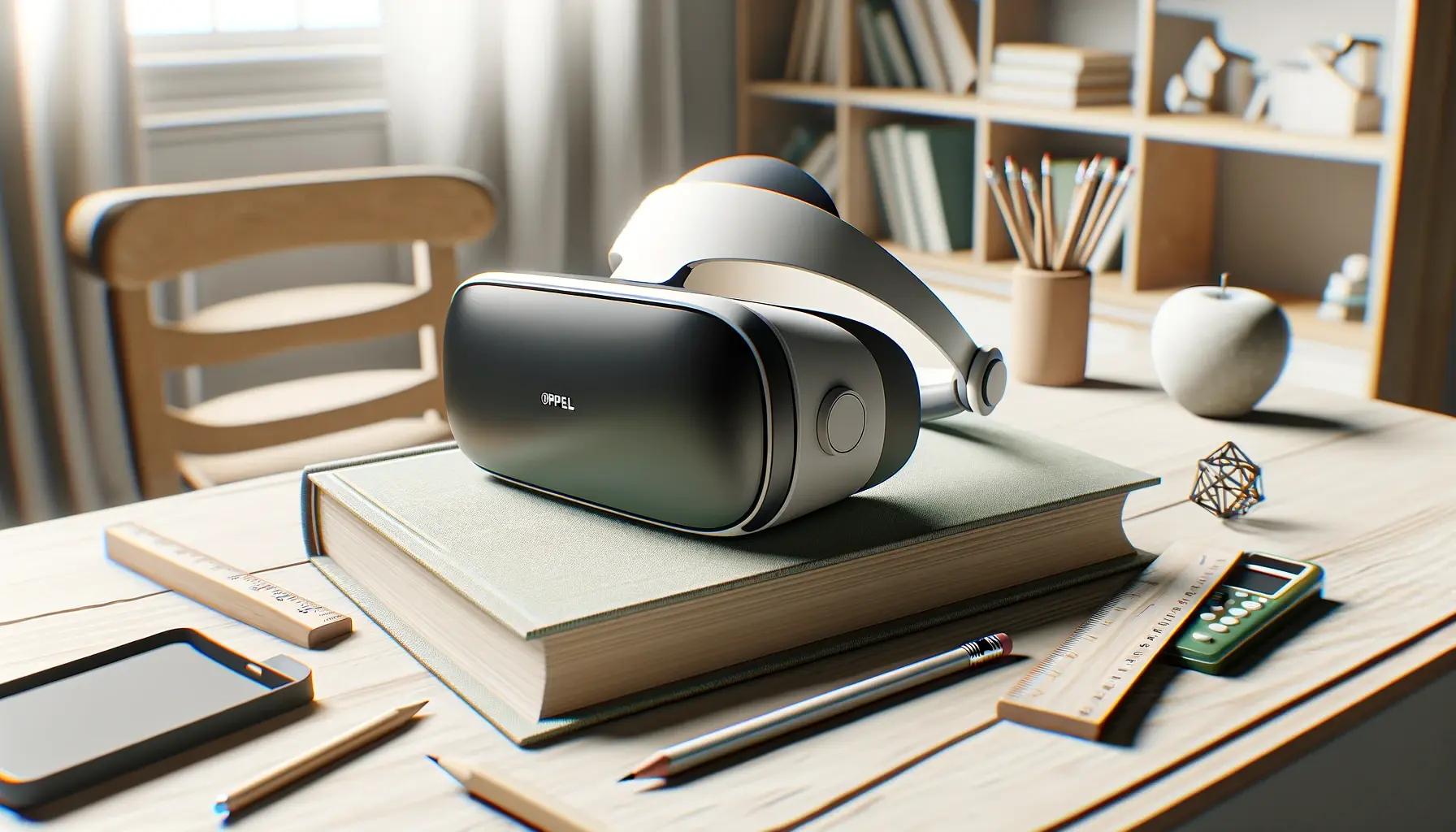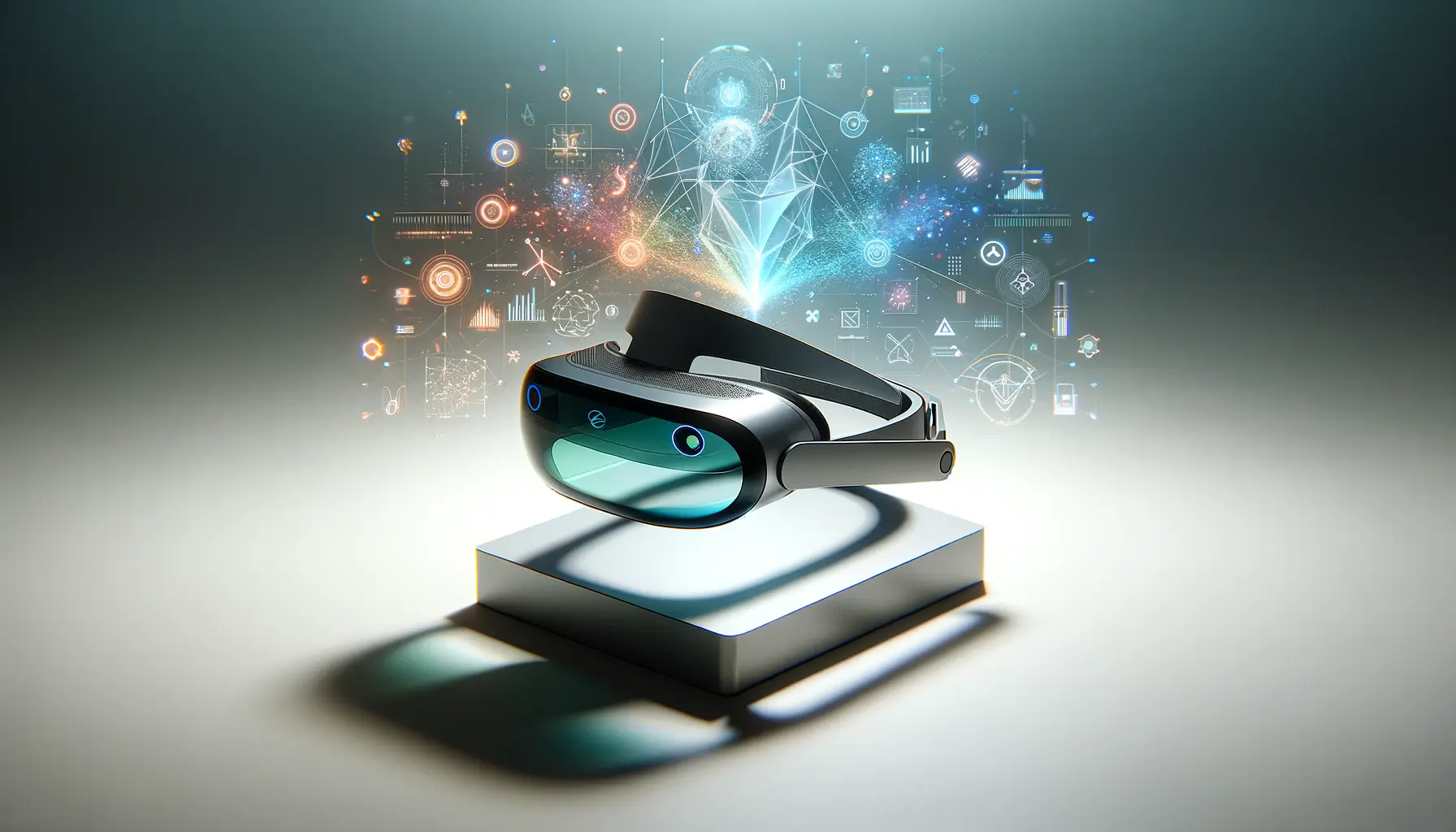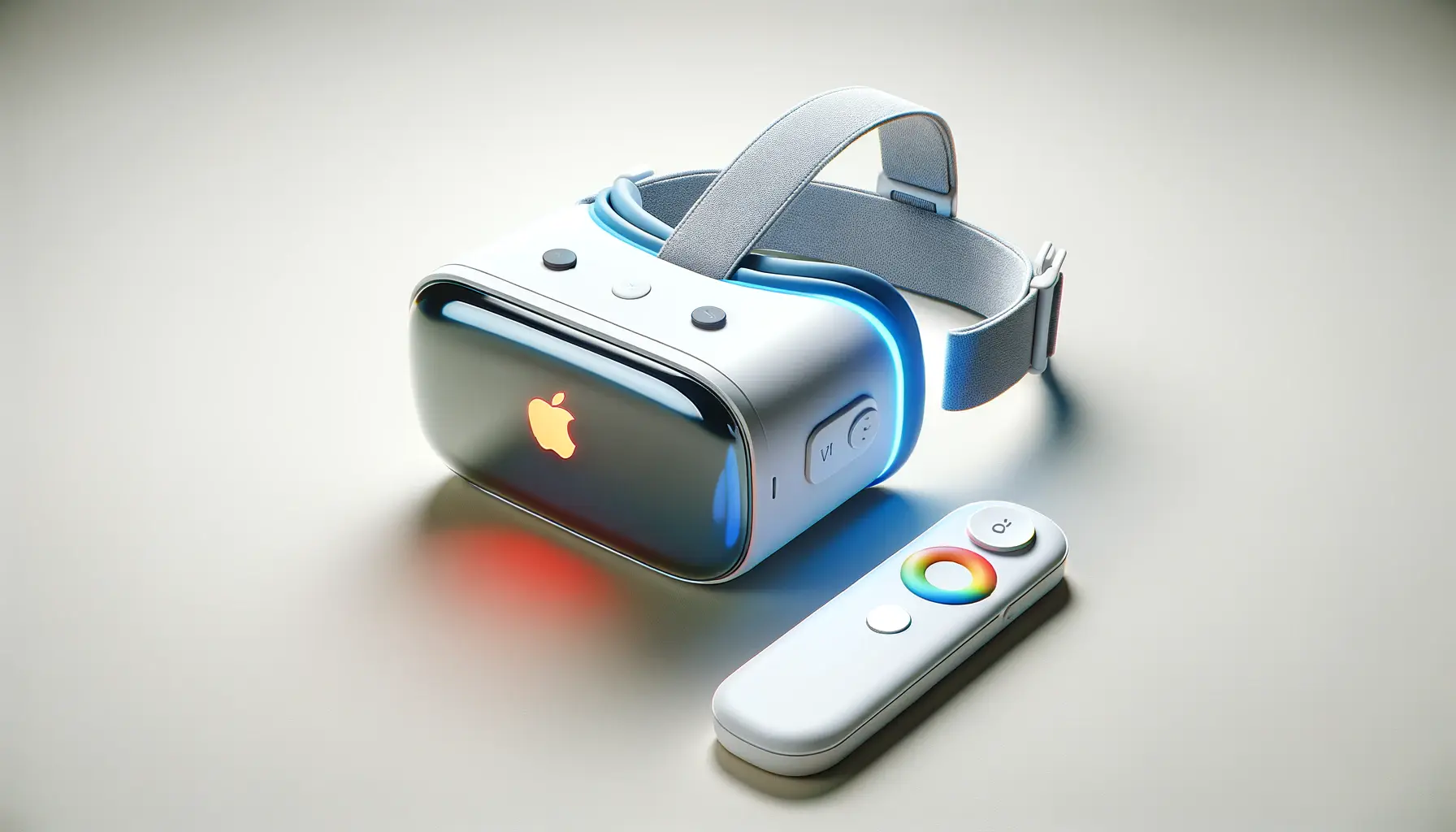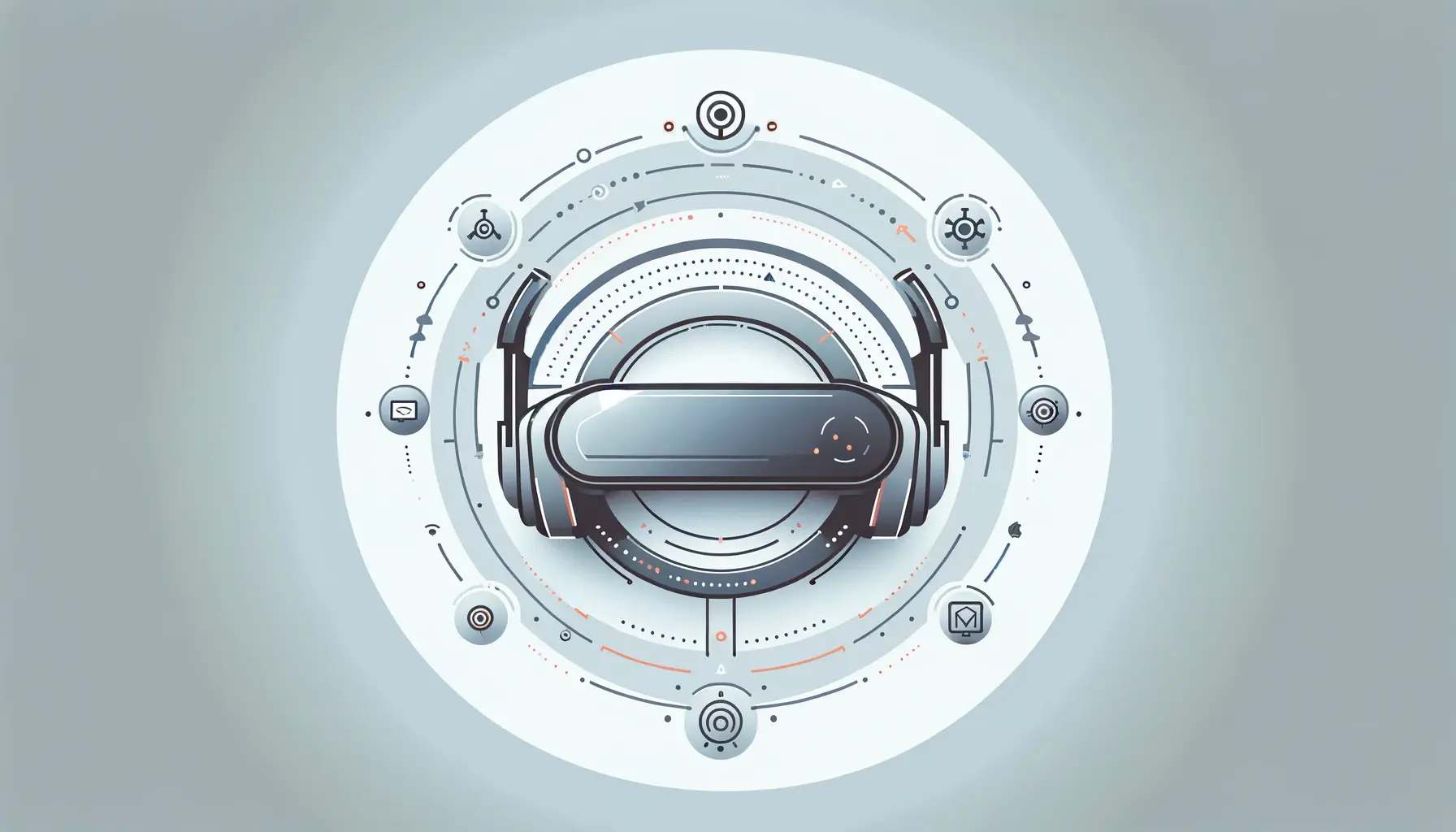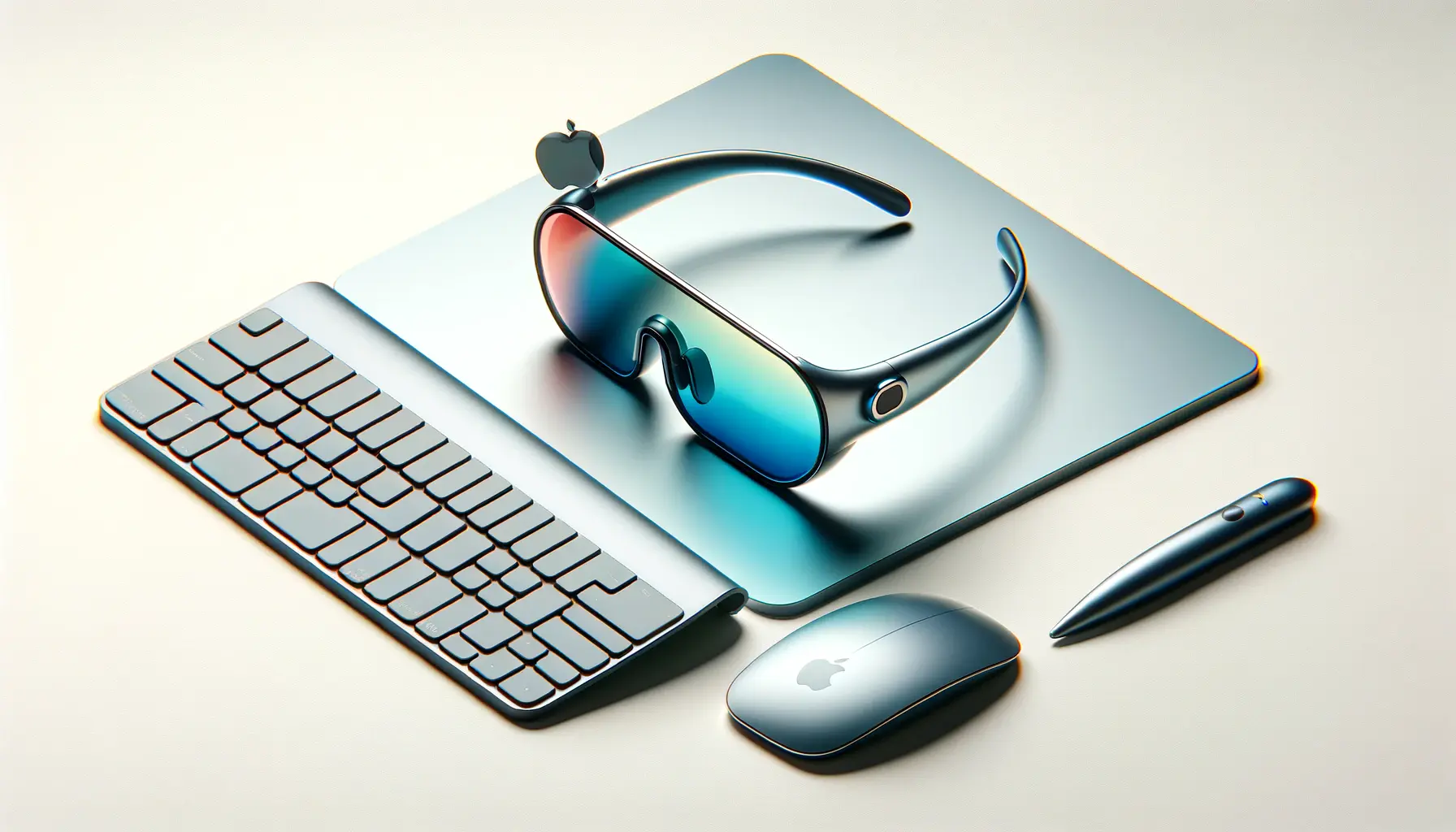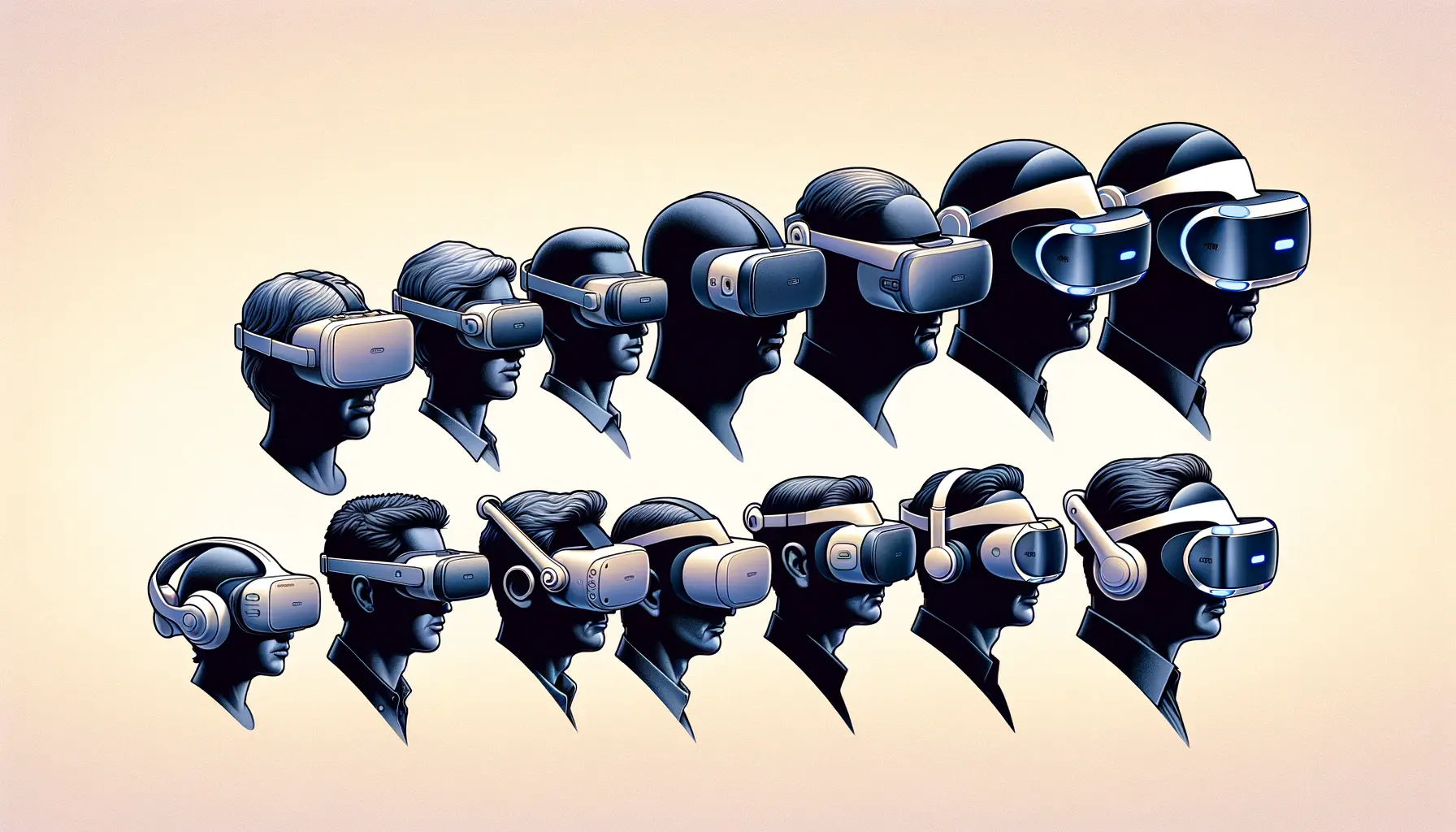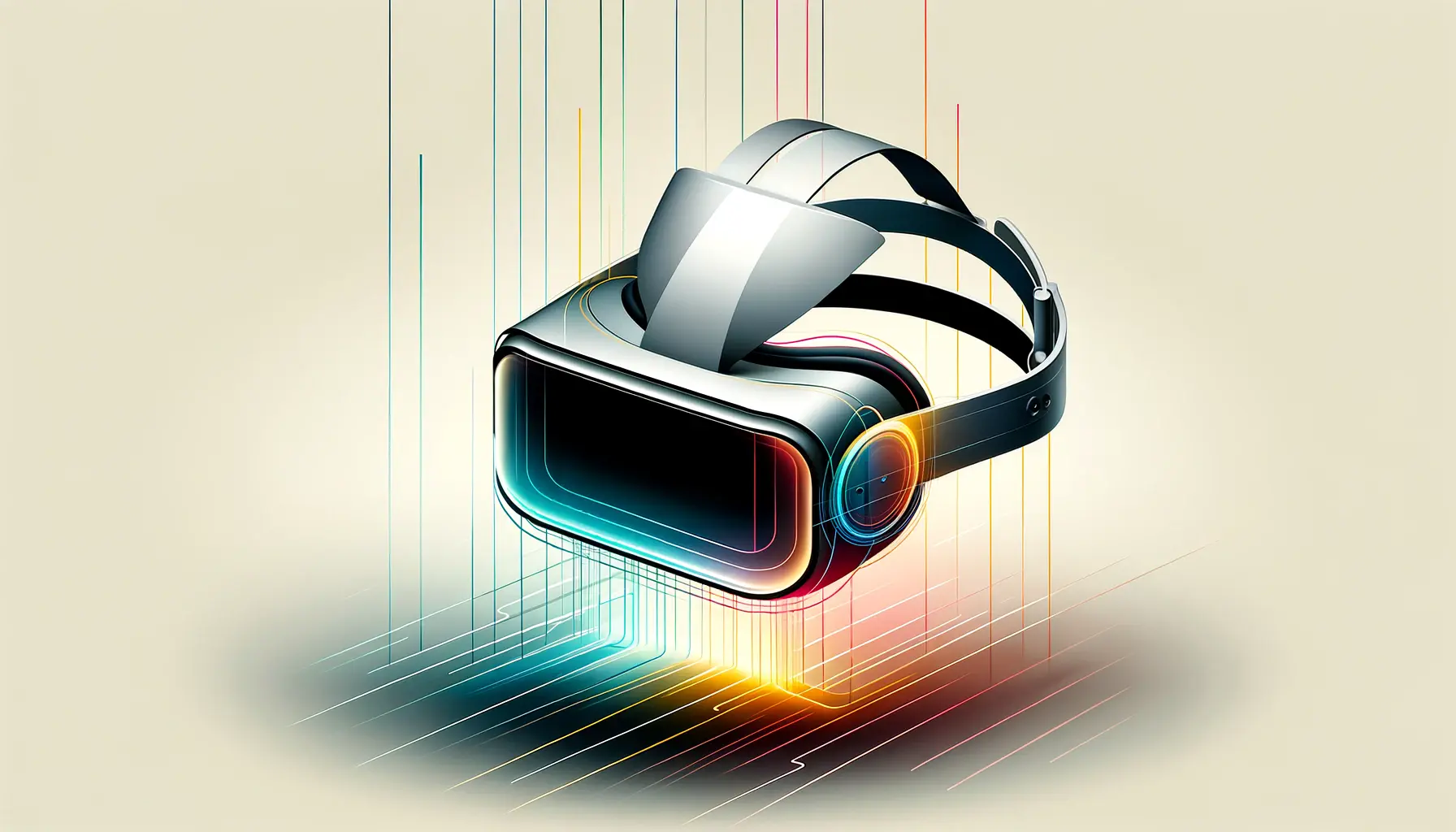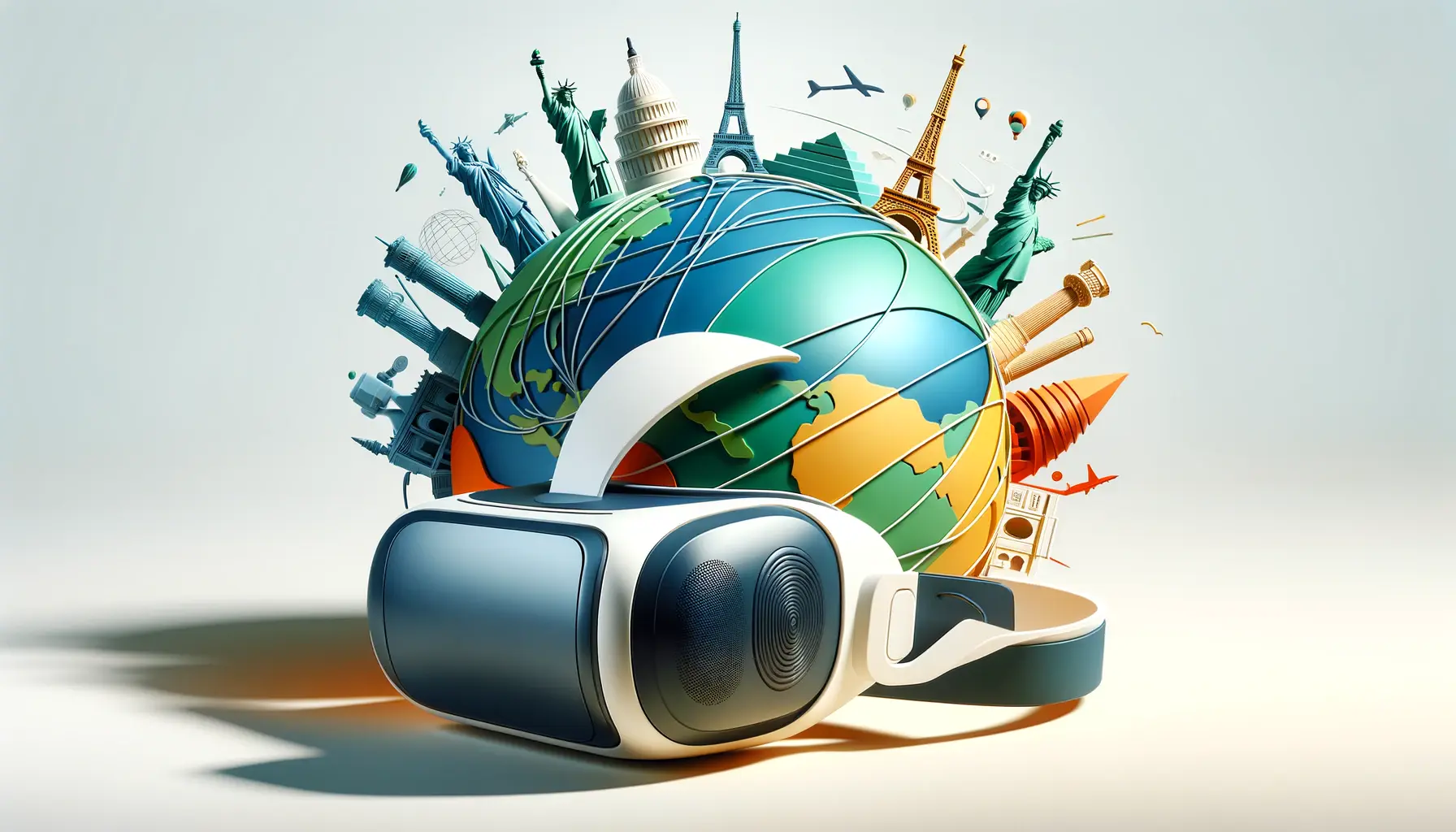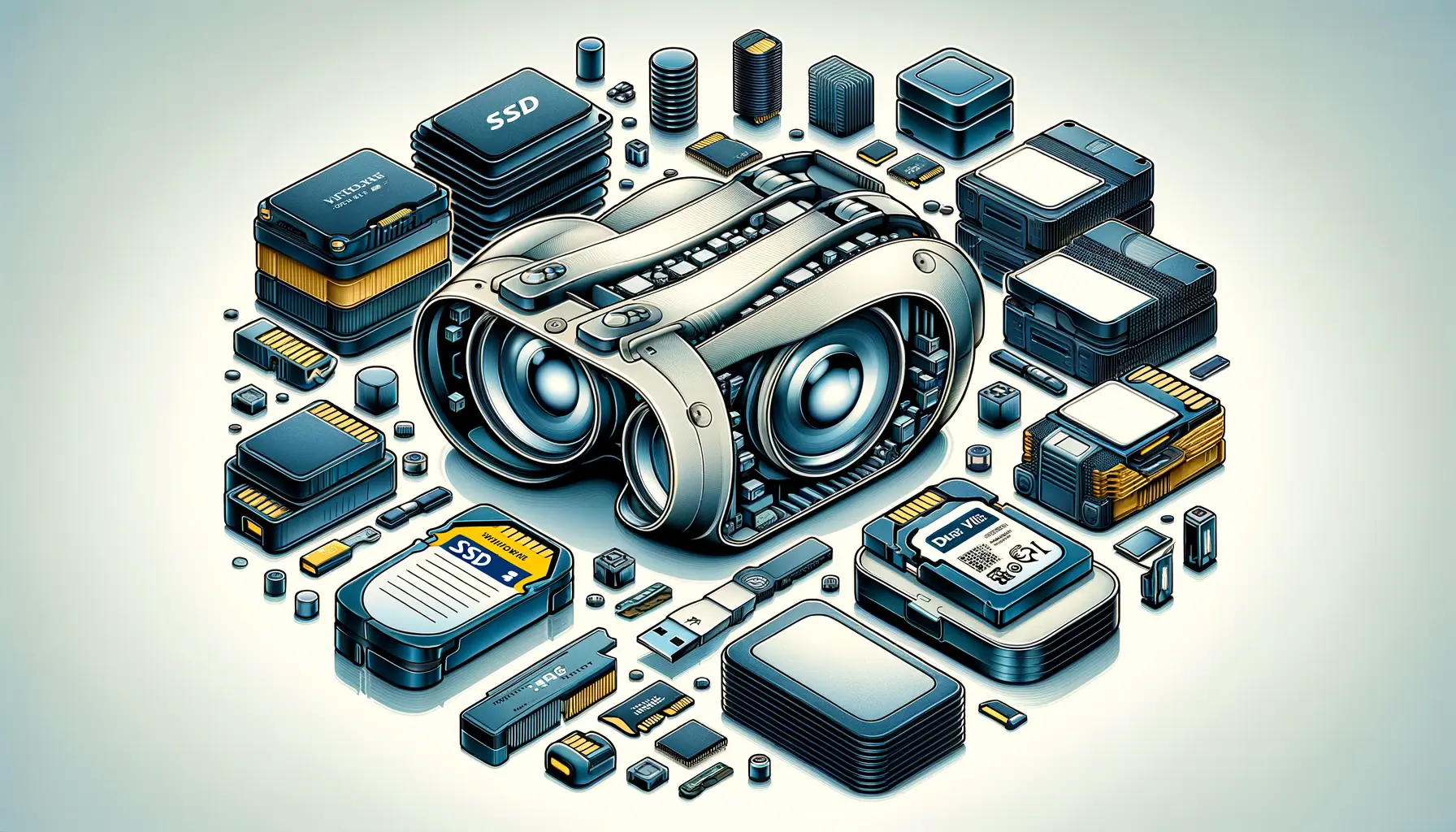The Apple Vision Pro has emerged as a groundbreaking device in the realm of virtual reality (VR) and augmented reality (AR), offering a unique blend of immersive experience and practical utility.
As it makes its way into the hands of creative professionals, particularly designers, its capabilities and features are put to the test.
This review delves into how the Apple Vision Pro stands up to the demands of design work, exploring its potential to revolutionize the way designers interact with digital content and bring their ideas to life.
At its core, the Apple Vision Pro is not just another VR headset.
It represents a significant leap forward in spatial computing, blending the digital and physical worlds in a way that was previously unimaginable.
For designers, this opens up a new frontier of possibilities, from 3D modeling and virtual prototyping to immersive presentations and collaborative workspaces.
But how does it perform in the real world?
This article aims to provide a comprehensive overview, examining the Apple Vision Pro’s impact on the design process, its benefits, and its limitations.
- Unpacking the Apple Vision Pro: A Designer’s Perspective
- Enhancing the Creative Workflow
- Challenges and Considerations for Designers
- Future Prospects: The Vision Pro in Design Evolution
- Integrating Vision Pro into Educational Curriculums
- Design Collaboration and Remote Work
- Environmental Impact and Sustainability
- Embracing the Future with Apple Vision Pro
- Apple Vision Pro for Designers: FAQs
Unpacking the Apple Vision Pro: A Designer’s Perspective
Design and Comfort
The Apple Vision Pro’s design is a testament to Apple’s commitment to aesthetics and functionality.
With its sleek aluminum frame and soft, knitted headband, it offers a level of comfort and style that sets it apart from other headsets on the market.
This is crucial for designers who may spend hours immersed in their work, requiring a device that is both comfortable to wear and visually appealing.
Moreover, the modular design of the Vision Pro, including interchangeable parts like the Light Seal and headband, ensures a personalized fit for a wide range of users.
This attention to detail in design and comfort not only enhances the user experience but also reflects Apple’s understanding of the needs of creative professionals.
Immersive Experience and Display Quality
The heart of the Apple Vision Pro’s appeal to designers lies in its unparalleled immersive experience and display quality.
The device’s micro-OLED technology delivers sharp, vibrant visuals, bringing designs to life with stunning clarity and depth.
This is particularly beneficial for tasks that require precision and detail, such as 3D modeling or color grading.
Additionally, the Vision Pro’s spatial computing capabilities allow designers to work within a three-dimensional navigational display, seamlessly integrating digital content into their physical workspace.
This not only enhances creativity and productivity but also opens up new avenues for collaboration and presentation.
The Apple Vision Pro’s design, comfort, and immersive experience set a new standard for VR/AR devices in the creative industry.
Enhancing the Creative Workflow
The integration of the Apple Vision Pro into a designer’s workflow signifies a monumental shift in how creative projects are conceived, developed, and finalized.
This device not only offers a new dimension of interaction with digital content but also streamlines the design process, making it more intuitive and efficient.
Let’s explore the various facets of how the Vision Pro enhances the creative workflow.
One of the most significant advantages is the ability to engage with 3D models and environments in a truly immersive manner.
Designers can now manipulate objects in space, experiencing their creations in full scale and context.
This direct interaction with digital elements can lead to more informed decisions and a deeper understanding of spatial relationships, which is invaluable in fields such as architecture, product design, and interactive media.
- Virtual Prototyping: The Vision Pro enables designers to create and test prototypes in a virtual environment, reducing the need for physical models. This not only saves time and resources but also allows for rapid iterations and experimentation.
- Collaborative Design Sessions: With spatial computing, multiple users can join a shared virtual space, regardless of their physical location. This fosters a collaborative environment where ideas can be discussed, modified, and approved in real-time, enhancing teamwork and creativity.
- Immersive Presentations: Designers can use the Vision Pro to present their projects in an immersive format, allowing clients and stakeholders to experience designs in a dynamic and engaging way. This can lead to better communication, understanding, and ultimately, more compelling presentations.
Software Integration and App Ecosystem
The success of the Apple Vision Pro in a design context is also heavily reliant on its software integration and the robustness of its app ecosystem.
Apple’s visionOS offers a seamless experience, with familiar apps and interfaces being adapted for spatial computing.
This ensures that designers can easily transition their existing workflows into the Vision Pro environment without a steep learning curve.
Moreover, the availability of professional design and modeling tools, optimized for the Vision Pro, plays a crucial role in its adoption.
Developers are already creating apps that leverage the device’s unique capabilities, offering tools for sketching, 3D modeling, and even virtual reality-based design critique sessions.
As this ecosystem grows, it will further solidify the Vision Pro’s position as an indispensable tool for designers.
The potential of the Apple Vision Pro to transform the creative workflow is immense, offering a blend of immersive experience, collaborative potential, and a growing app ecosystem.
Challenges and Considerations for Designers
While the Apple Vision Pro heralds a new era of design possibilities, it also brings forth challenges and considerations that designers must navigate.
The integration of such advanced technology into daily creative processes is not without its hurdles.
Understanding these challenges is crucial for maximizing the potential of the Vision Pro in a design context.
Firstly, the adoption of spatial computing requires a shift in mindset from traditional design methodologies.
Designers are accustomed to working within the constraints of two-dimensional screens and interfaces.
The transition to a three-dimensional, immersive environment demands new skills and a reevaluation of existing design principles.
This learning curve, while exciting, can be daunting for some, necessitating a period of adjustment and experimentation.
- Hardware Limitations: Despite its advanced features, the Vision Pro is not immune to the limitations inherent in current VR/AR technology. Issues such as battery life, device weight, and the need for a tethered connection to a power source can impact usability, especially during prolonged design sessions.
- Software Compatibility: The effectiveness of the Vision Pro as a design tool is also dependent on the availability and compatibility of professional design software. While Apple’s visionOS provides a solid foundation, the breadth and depth of the app ecosystem will be a determining factor in its utility for complex design tasks.
- Cost Consideration: The high entry price of the Apple Vision Pro may be a barrier for individual designers and small studios. While the investment can be justified by the device’s potential to revolutionize the design process, it remains a significant consideration for many in the creative industry.
Overcoming the Challenges
To fully leverage the Vision Pro’s capabilities, designers and studios must adopt strategies to overcome these challenges.
This includes investing in training to master new tools and techniques, staying updated with the latest software developments, and considering the long-term benefits of integrating spatial computing into their workflow.
Additionally, designers can explore collaborative opportunities and shared resources to mitigate the cost of adoption.
As the technology matures and the ecosystem around the Apple Vision Pro expands, it is expected that many of these challenges will be addressed.
Continuous updates and improvements from Apple, along with feedback from the design community, will shape the evolution of this transformative tool.
Navigating the challenges associated with the Apple Vision Pro requires a proactive approach, focusing on skill development, software exploration, and community engagement.
Future Prospects: The Vision Pro in Design Evolution
The introduction of the Apple Vision Pro into the design landscape is not just a momentary innovation but a harbinger of the future of design.
As we look forward, the implications of this technology extend far beyond the immediate enhancements to the creative workflow.
The Vision Pro is poised to fundamentally transform the way designers think about and interact with digital environments, heralding a new era of spatial computing in design.
The potential for immersive technology to blend the digital and physical worlds opens up unprecedented opportunities for creativity and innovation.
Designers will not only be able to visualize their creations in three dimensions but also interact with them in real-time, experiencing their designs as they would exist in the real world.
This level of immersion and interactivity promises to elevate the design process, enabling more intuitive creation, iteration, and collaboration.
- Expanding Creative Boundaries: With the Vision Pro, designers can push the boundaries of what’s possible, exploring new forms, textures, and spatial relationships. This could lead to the emergence of new design languages and aesthetics that fully leverage the capabilities of spatial computing.
- Enhanced Collaboration and Presentation: The ability to share immersive experiences will transform collaboration among designers, clients, and stakeholders. Presentations can become dynamic, interactive sessions where participants can explore designs in a shared virtual space, leading to deeper engagement and understanding.
- Integration with Emerging Technologies: The convergence of the Vision Pro with other emerging technologies, such as AI and machine learning, could further enhance the design process. Designers could leverage AI to generate design options, predict user interactions, and automate aspects of the design process, all within an immersive environment.
Preparing for the Future
As the design industry stands on the cusp of this transformative shift, it’s imperative for designers and design educators to prepare for the future.
This involves not only mastering the technical aspects of the Vision Pro and spatial computing but also embracing a mindset of continuous learning and experimentation.
Designers must be willing to explore new paradigms, experiment with emerging tools, and engage with the broader design community to share insights and best practices.
The future of design, shaped by technologies like the Apple Vision Pro, promises to be more interactive, collaborative, and immersive.
By embracing these changes, designers can unlock new levels of creativity and innovation, ultimately enriching the human experience through design.
The Apple Vision Pro represents a pivotal moment in design evolution, offering a glimpse into a future where spatial computing and immersive technologies redefine the creative landscape.
Integrating Vision Pro into Educational Curriculums
The advent of the Apple Vision Pro presents a unique opportunity for design education.
Integrating this technology into educational curriculums can significantly enhance the learning experience, providing students with the tools and knowledge to thrive in the evolving design landscape.
The immersive nature of the Vision Pro offers a hands-on approach to learning, enabling students to explore complex concepts in a more intuitive and engaging manner.
By incorporating the Vision Pro into design programs, educational institutions can offer students a glimpse into the future of design.
This not only prepares them for the technological advancements in their field but also encourages the development of critical thinking and problem-solving skills.
The ability to visualize and interact with designs in a three-dimensional space can deepen understanding and foster a more holistic approach to design education.
- Curriculum Development: Developing curriculums that incorporate the Vision Pro involves collaboration between educators, technologists, and industry professionals. This ensures that the content is relevant, up-to-date, and aligned with the needs of the design industry.
- Project-Based Learning: The Vision Pro can be utilized to facilitate project-based learning, where students undertake real-world design challenges using spatial computing. This approach promotes active learning and equips students with practical skills and experience.
- Interdisciplinary Collaboration: Spatial computing transcends traditional design boundaries, opening up opportunities for interdisciplinary collaboration. Students can work alongside peers from other disciplines, such as engineering, computer science, and architecture, to develop comprehensive solutions that leverage the strengths of each field.
Challenges in Educational Integration
While the integration of the Vision Pro into design education offers numerous benefits, it also poses challenges.
Accessibility and cost are significant considerations, as not all institutions may have the resources to provide students with access to this technology.
Additionally, educators must undergo training to effectively incorporate spatial computing into their teaching methodologies.
Overcoming these challenges requires strategic planning, investment in resources, and ongoing support for both teachers and students.
Despite these hurdles, the potential of the Vision Pro to transform design education is undeniable.
As the technology becomes more accessible and its applications in design continue to expand, it is likely that spatial computing will become an integral part of design curriculums.
Preparing the next generation of designers to navigate and leverage this new landscape is essential for their success in the future of design.
The integration of the Apple Vision Pro into design education represents a forward-thinking approach to preparing students for the future, emphasizing the importance of hands-on, immersive learning experiences.
Design Collaboration and Remote Work
The Apple Vision Pro is set to redefine the paradigms of design collaboration and remote work.
In an era where remote work has become increasingly prevalent, the Vision Pro offers a solution that bridges the gap between physical distance and collaborative creativity.
Its immersive environment enables designers to work together in virtual spaces as if they were in the same room, transforming the way collaborative projects are conceived and executed.
This technology facilitates a level of interaction and engagement that traditional video conferencing tools cannot match.
Designers can share and manipulate 3D models in real-time, conduct immersive presentations, and receive immediate feedback, all within a shared virtual environment.
This not only enhances the efficiency of collaborative projects but also fosters a deeper connection among team members, regardless of their physical location.
- Global Design Teams: The Vision Pro enables design teams spread across different geographies to collaborate more effectively. It eliminates the barriers of distance, allowing for a seamless exchange of ideas and fostering a truly global design process.
- Client Engagement: Presenting designs to clients in an immersive environment can significantly enhance the client’s understanding and appreciation of the project. This can lead to more productive discussions, quicker decision-making, and higher client satisfaction.
- Education and Training: The Vision Pro can also be used for remote education and training purposes. Design professionals can conduct workshops, tutorials, and critiques in a virtual setting, making design education more accessible and interactive.
Overcoming Remote Work Challenges
While the Vision Pro offers numerous advantages for remote work and collaboration, it also addresses some of the common challenges associated with remote design work.
Issues such as miscommunication, lack of engagement, and the difficulty of conveying complex design concepts can be mitigated through the use of immersive technology.
By providing a platform for more intuitive and interactive collaboration, the Vision Pro helps overcome these obstacles, leading to more cohesive and successful design outcomes.
As the world continues to embrace remote work, the role of technologies like the Apple Vision Pro in facilitating effective collaboration and communication becomes increasingly important.
By leveraging the capabilities of spatial computing, design teams can navigate the challenges of remote work, fostering a culture of innovation and creativity that transcends physical boundaries.
Embracing the Apple Vision Pro for remote work and collaboration represents a significant step forward in overcoming the limitations of traditional remote work setups, offering a glimpse into the future of global design collaboration.
Environmental Impact and Sustainability
In the wake of growing environmental concerns, the sustainability of new technologies like the Apple Vision Pro is a critical consideration.
As designers and consumers alike become more conscious of their ecological footprint, the environmental impact of such advanced devices comes under scrutiny.
Apple has a history of prioritizing sustainability in its product development, and the Vision Pro is no exception.
This section explores the environmental considerations associated with the Vision Pro and how it aligns with broader sustainability goals.
The Vision Pro’s design and manufacturing processes reflect Apple’s commitment to reducing environmental impact.
From the use of recycled materials in its construction to energy-efficient operation, every aspect of the Vision Pro is designed with sustainability in mind.
However, the true environmental impact of such devices extends beyond their physical production to include their lifecycle, usage patterns, and eventual disposal or recycling.
- Recycled Materials: Apple’s use of recycled aluminum, glass, and other materials in the Vision Pro’s construction not only minimizes its environmental footprint but also sets a precedent for sustainable design practices in the tech industry.
- Energy Efficiency: The Vision Pro’s energy-efficient components and software optimizations contribute to lower power consumption during use, aligning with broader efforts to reduce the carbon footprint of digital technologies.
- Product Lifecycle: Apple’s approach to the Vision Pro’s lifecycle, including repairability, upgradability, and recycling programs, ensures that the device can be used and disposed of in an environmentally responsible manner.
Challenges and Opportunities
Despite these efforts, the widespread adoption of VR/AR technologies like the Vision Pro presents both challenges and opportunities for environmental sustainability.
The production and use of such devices inevitably contribute to electronic waste, a growing concern in the digital age.
However, this also presents an opportunity for innovation in recycling and waste management practices, as well as the development of more sustainable technologies.
As the Vision Pro and similar devices become more prevalent, their environmental impact will continue to be a topic of discussion and action.
By prioritizing sustainability in the design and development of such technologies, companies like Apple can lead the way in minimizing the ecological footprint of our digital future.
Assuming that advanced technologies like the Apple Vision Pro are inherently unsustainable overlooks the significant efforts made to minimize their environmental impact through sustainable design and manufacturing practices.
Embracing the Future with Apple Vision Pro
The journey through the capabilities, implications, and potential of the Apple Vision Pro for designers has been both enlightening and inspiring.
As we stand on the brink of a new era in design and creative expression, it’s clear that the Apple Vision Pro is not merely a tool but a harbinger of transformative change.
Its introduction marks a significant milestone in the evolution of design, offering a glimpse into a future where the boundaries between the digital and physical realms blur, fostering an environment ripe for innovation and collaboration.
The Catalyst for Creative Revolution
The Apple Vision Pro, with its unparalleled immersive experience and spatial computing capabilities, is poised to be the catalyst for a creative revolution.
Designers are afforded a new dimension of creativity, where the constraints of traditional mediums are replaced with limitless virtual canvases.
This shift is not just about enhancing the aesthetic and functional aspects of design but about reimagining the very process of creation itself.
The Vision Pro encourages designers to explore uncharted territories, pushing the boundaries of what’s possible and redefining the standards of design excellence.
Collaboration Without Borders
Moreover, the Apple Vision Pro redefines the concept of collaboration, transcending geographical limitations and fostering a global design community.
The ability to work, share, and create together in a virtual space is a testament to the device’s potential to unite designers from all corners of the globe.
This collaborative spirit, powered by the Vision Pro, is essential in addressing the complex design challenges of our time, leveraging diverse perspectives and expertise to innovate and solve problems.
- Global design teams can collaborate as if in the same room, breaking down barriers of distance and time zones.
- Client presentations and stakeholder engagements become more interactive and immersive, enhancing understanding and feedback.
- Education and training benefit from a hands-on approach, preparing the next generation of designers for the future of the industry.
Sustainability at the Core
Amidst the excitement surrounding the technological advancements of the Apple Vision Pro, its environmental impact and sustainability efforts are commendable.
Apple’s commitment to using recycled materials, ensuring energy efficiency, and advocating for responsible lifecycle management reflects a broader responsibility towards our planet.
As designers and consumers embrace the Vision Pro, it’s crucial to remain mindful of the ecological footprint of our technological pursuits, striving for innovation that harmonizes with environmental stewardship.
In conclusion, the Apple Vision Pro for designers is more than just an evolution in technology; it’s a vision for the future of design.
Its impact extends beyond individual creativity, promising to reshape the landscape of design education, collaboration, and environmental responsibility.
As we move forward, the Vision Pro stands as a beacon of potential, challenging us to reimagine the possibilities of design and to embrace the future with open arms and creative minds.
If you're seeking expertise in Apple Search Ads campaigns, visit our service page for professional management!
Apple Vision Pro for Designers: FAQs
Explore the most common inquiries about the Apple Vision Pro for designers, providing insights into its features, capabilities, and how it integrates into the creative workflow.
Apple Vision Pro is a groundbreaking spatial computing device that blends digital content with the physical world, designed for immersive experiences.
It offers designers a 3D spatial canvas for prototyping, collaboration, and presenting designs in an immersive environment.
Yes, it enables designers to collaborate in shared virtual spaces, enhancing teamwork and client presentations.
With its ergonomic design and customizable fit, it’s built for comfort during extended use.
It runs on visionOS, supporting a range of apps optimized for spatial computing and design tasks.
Apple emphasizes the use of recycled materials and energy-efficient technologies in its construction.
Designers may face a learning curve with spatial computing and need to adapt to new design paradigms.
For those seeking to push the boundaries of creativity and collaboration, its advanced features justify the investment.
